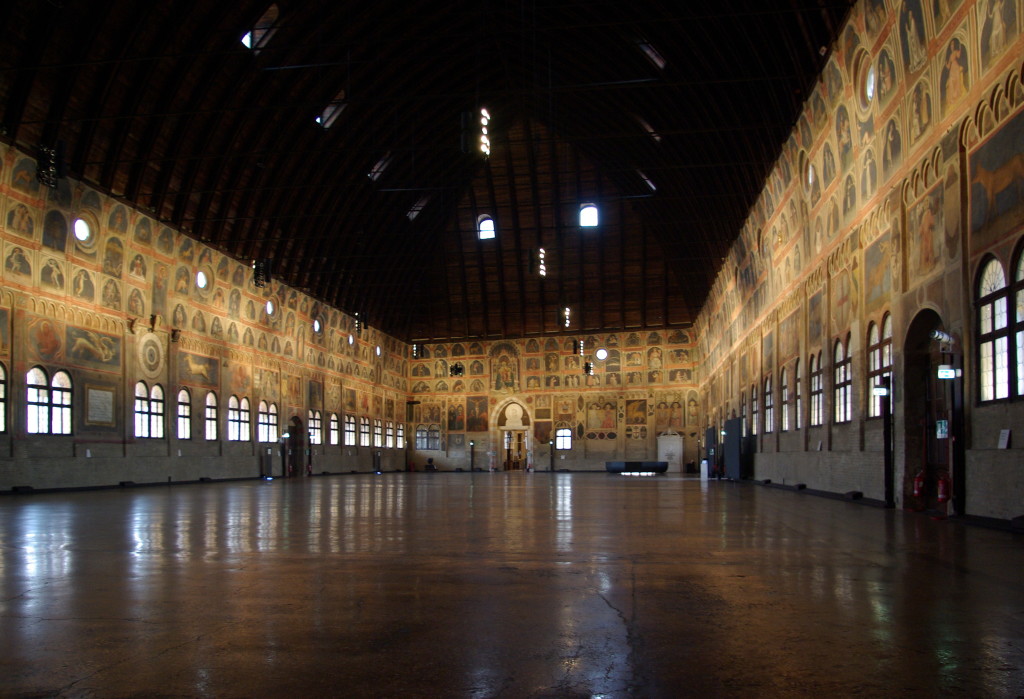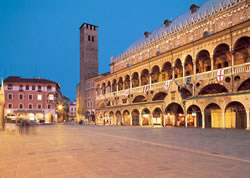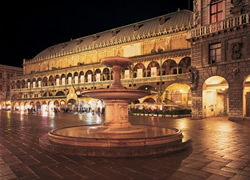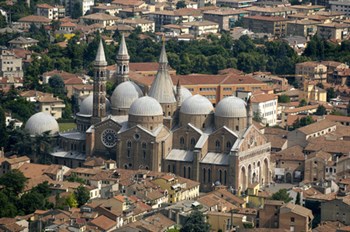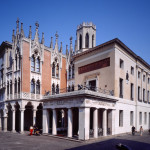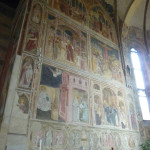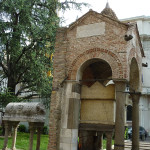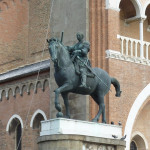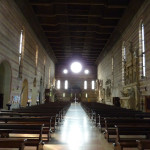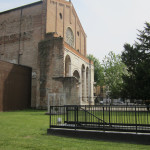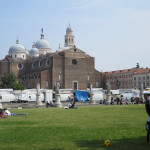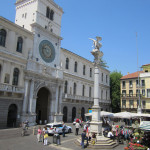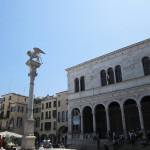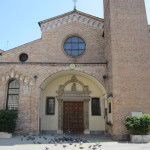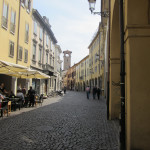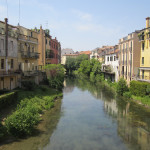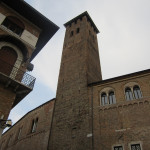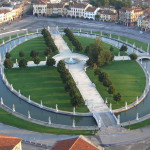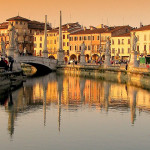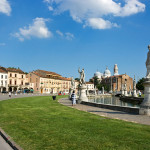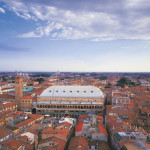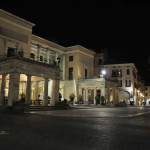Welcome Padova
Scrovegni Chapel 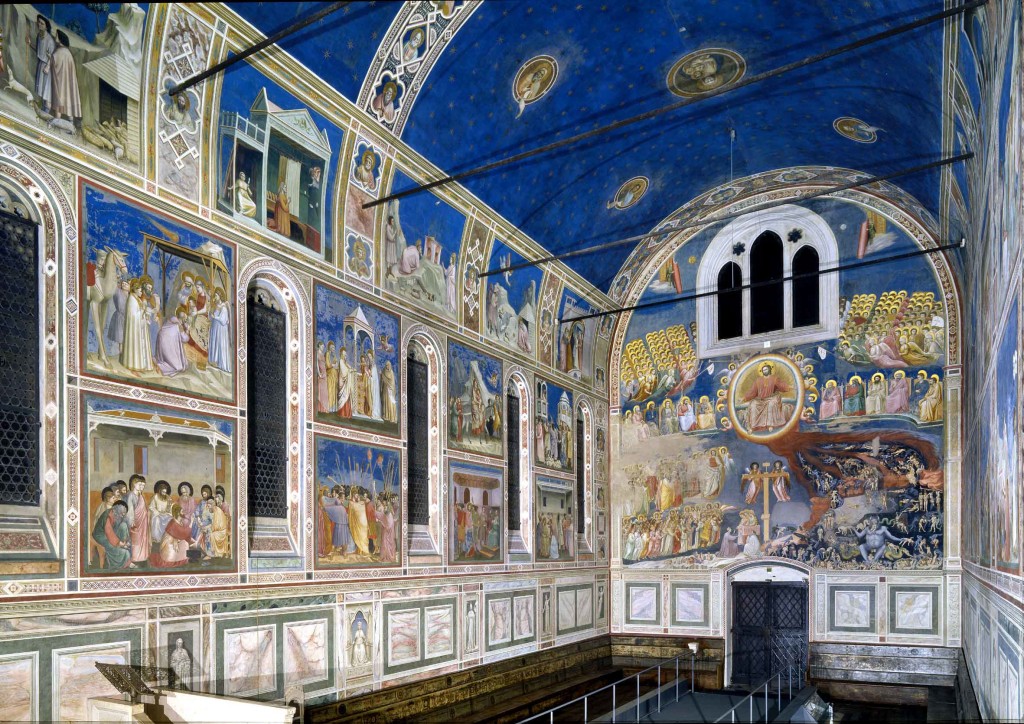
The Scrovegni Chapel cycle of frescoes is considered one of the greatest art masterpieces of the Italian and European 14th century painting. It is the most complete and best preserved cycle of frescoes painted by the Tuscan master Giotto. Colours and light, poetry and pathos. God and Man. Nature and History, Human feelings and Faith mix together in a unique and inimitable style, which totally transformed the language of Western art.
Remember to book on www.cappelladegliscrovegni.it!
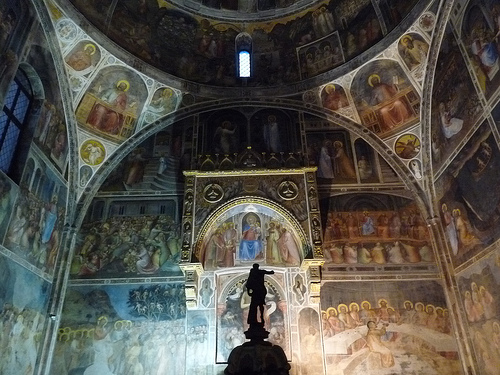 Baptistery of the Cathedral
Baptistery of the Cathedral
Between 1375 and 1378 the Tuscan painter Giusto de Menabuoi decorated the walls of the Baptistery with a cycle of frescoes depicting scenes from the Ancient and New Testament. The dome is completely covered by the so called Paradise: Christ at the centre of the dome is surrounded by an astonishing number of angels and saints.
On the walls are the lives of st. John the Baptist and Jesus. On the small apse are scenes from the Apocalypse.
The decoration was commissioned by Fina Buzzaccarini, the wife of Francesco il Vecchio Da Carrara, Lord of Padua in the 14th century.
Many of the scenes are delightful, Giusto loved to represent maps and geographical elements, therefore you will also admire the beautiful map of the world that he represented in the scene of the Creation and a number of views of Padua’s boroughs and churches that Giusto painted in the backgrounds of the sacred episodes.
The Palazzo della Ragione was built in 1218 and enlarged in 1306. Until 1797 it was used as city council’s assembly hall and palace of justice (hence the appelation della Ragione, meaning of reason).
The upper floor, called Il Salone, is a vast hall, one of the largest medieval halls of the world (mt. 81x27x27). It has a beautiful wooden ceiling and is decorated by an astounding cycle of frescoes depicting the astrological theories of Pietro d’Abano, a professor at La Sorbonne in Paris and later at Padua University in the 13th century. The frescoes represent the influxes of stars on men’s activities and life. The gigantic wooden horse on the western side of the hall was built in 1466 and is modelled on Donatello’s Gattamelata standing on Piazza del Santo. On the eastern side there is a contemporary version of the Foucault’s Pendulum.
Multimedia information points in English are available inside the hall.
On the ground floor, the so called Sottosalone, are hosted various shops where you can find all sort of Paduan specialties and delicatessen.
The palace separates Piazza delle Erbe from Piazza dei Frutti, the seat of the daily fruit and vegetable market.
Basilica of St.Anthony
The Basilica of St. Anthony, often called Basilica del Santo, is a complex stately religious building which was started in 1232, a year after St. Anthony’s death.
The outside of the Basilica is a mixture of Lombard, Tuscan and Byzantine styles; the 8 domes and the 2 bell-towers are built in the oriental style. The golden angel on the highest dome is said to turn following the winds, thus giving exact weather forecast.
The 3 bronze portals of the façade were planned by Camillo Boito (1895).
The plan of the interior is cruciform, with the nave and 2 aisles that unite behind the apses and create a semicircle where 9 radial chapels are to be seen.
Big columns separate the aisles.
In the Chapel of the Saint you will find the tomb (sarcophagus) of St.Anthony, by Andrea Briosco and Gianmaria Falconetto.
Inside the Basilica there are important ancient and contemporary works of art, among which the Chapel of the Blessed Luca Belludi, entirely frescoed by Giusto de’ Menabuoi (1382), the Chapel of San Giacomo or San Felice with a beautiful cycle of paintings by Altichieri da Zevio (1374-78), the high altar with Donatello’s sculptures, among which stands out the Crucifix (the Gattamelata equestrian statue in front of the Basilica is also by Donatello).
Other works are by Sansovino, Briosco, Tiepolo, Titian, Achille Casanova, Ubaldo Oppi, Pietro Annigoni, and many others.
The convent cloisters are also very fine, especially the magnolia cloister, where you can see numerous works in marble and a century-old magnolia tree.
Facing the Basilica if you look to your right you can see the Oratory of st. George, chapel of the Lupi di Soragna family, built in 1377 and entirely frescoed by Altichieri da Zevio (1379-1384), the Scuola del Santo, which contains paintings related to St. Anthony from different time periods including those by Titian, and the Antoniano Museum, opened in 1995 to commemorate the 8th centenary of St. Anthony’s birth, in which you can find paintings, jewellery, paraments and sculptures.
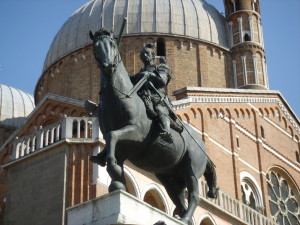 Equestrian statue of Gattamelata
Equestrian statue of Gattamelata
Location: Piazza del Santo, Padua, Italy
The Equestrian Statue of Gattamelata is sculpture by Italian early Renaissance artist Donatello, dating from 1453, located in the Piazza del Santo in Padua, Italy, today. It portrays the Renaissance condottiero Erasmo da Narni, known as “Gattamelata”, who served mostly under the Republic of Venice, which ruled Padua at the time. is the first European equestrian monument that was used to expedite the human activity of “man”. Only the Roman emperors, before this, they could have had an equestrian monument. This is why, today, the Gattamelata is the symbol of Padua
Eremitani Town Museums
The Eremitani Town Museums are housed in the restored rooms and cloisters of the former Hermits Monastery. Originally the seat of the museum collections was at Piazza del Santo. Between 1985 and 1997 the museum moved to Piazza Eremitani. The museum has two sections: Archeological Museum and Medieval and modern Art and the Multimedia room dedicated to the Scrovegni Chapel. In the Archaeological section you can admire preroman findings (8th-3rd century BC) coming from the paduan territory, roman findings and some Egyptian items.
The Museum of Medieval and Modern Art displays about 3000 paintings dating from the 13th to the 18th century.
Prato della Valle 
Prato della Valle is one of the biggest square in Europe (90.000 mq). The Prato della Valle was transformed into a place for markets, performances and meetings in 1775. Statues of still famous persons, among which the mythical foundator of Padova Antenore.
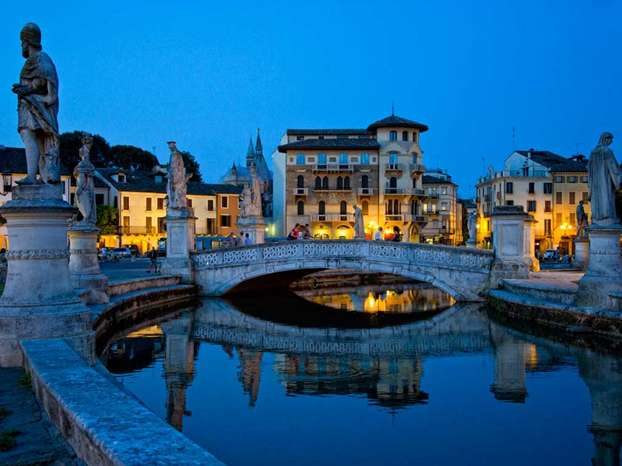
Padua, City of Science
Padua is a great place to trace the history of man’s progress and achievements in the field of science, technique and creativity. In its glorious University fundamental contributions to the progress of science and technology have been made.
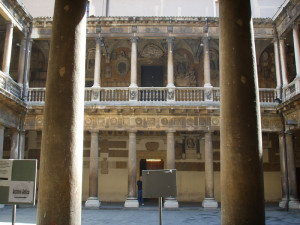 The University of Padua was established in 1222. At the time the Commune was particularly wealthy and assured security and freedom to its citizens. It is one of the oldest universities in the world, the second in Italy after Bologna. It keeps several places of great historical value: the anatomy theatre (1594) which is the oldest in the world; the 14th century Medicine room; Galileo’s chair; the Aula Magna and the 16th century Old Cloister the walls of which are lined with the coats of arms of students and professors who attended the University up to the 16th century.
The University of Padua was established in 1222. At the time the Commune was particularly wealthy and assured security and freedom to its citizens. It is one of the oldest universities in the world, the second in Italy after Bologna. It keeps several places of great historical value: the anatomy theatre (1594) which is the oldest in the world; the 14th century Medicine room; Galileo’s chair; the Aula Magna and the 16th century Old Cloister the walls of which are lined with the coats of arms of students and professors who attended the University up to the 16th century.
The Botanic garden is another scientific treasure. It was founded in 1545 by Padua University for the study of the simples, i.e. medical plants. It is the oldest university botanical garden in the world, which has never changed its original settlement. It keeps about 6000 plants. since 1997 it is part of the Unesco World Cultural Heritage.
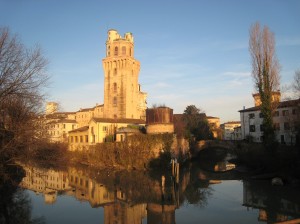 Another science place belonging to Padua University is the astronomic observatory, called La Specola. It was built in the 18th century on a tower belonging to Padua medieval castle to test the astronomic theories elaborated at the University. Today it houses the University Astronomy Department and a museum which showcases various scientific instruments coming from different countries.
Another science place belonging to Padua University is the astronomic observatory, called La Specola. It was built in the 18th century on a tower belonging to Padua medieval castle to test the astronomic theories elaborated at the University. Today it houses the University Astronomy Department and a museum which showcases various scientific instruments coming from different countries.
Many other University Museums reveal the continuing influence of Padua University on world art and culture: the Geological and Paleonthological Museum, the Museum of Phisycs, the Museum of Mineralogy, and many institutes of research and scientific studies.

